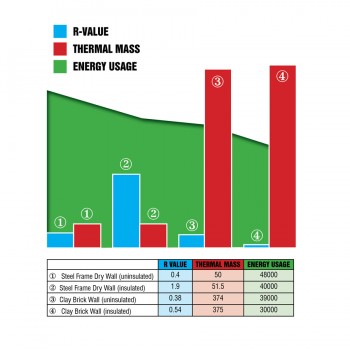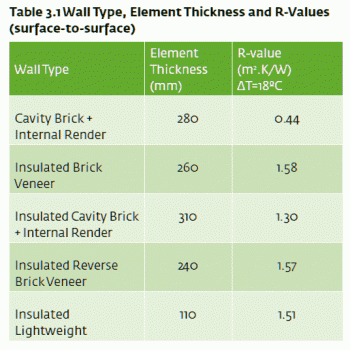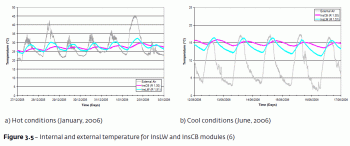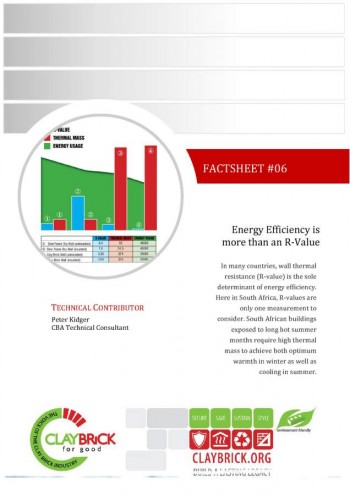#06 All About R-Values and Energy Efficiency
In many countries, wall thermal resistance or R-value is the sole determinant of energy efficiency. Here in South Africa, R-values are only one measurement to consider.
Although South Africans think of their weather as mild in comparison to countries in the northern hemisphere, in reality our macroclimate has its own unique complications when it comes to construction. Buildings in Europe focus on dealing with extreme cold – most energy costs are used in keeping warm - so double glazing, insulated walls and roofs and tight sealing of windows and doors are all critical.
Here in South Africa, winter temperatures in the Highveld approach zero at night, but the following day can easily reach 25°C. In summer, nights are hot but days are truly blistering with temperatures as high as 40°C at midday.
We cannot design and build our homes and offices to keep heat inside, because for at least 6 months of the year, our biggest issue is keeping the heat out!
Does R-Value = Energy Efficiency?
The R-value is a measure of thermal resistance used in the building and construction industry. Under uniform conditions it is the ratio of the temperature difference across an insulator and the heat flux (heat transfer per unit area, ).
In many countries, wall thermal resistance (R-value) is the sole determinant of energy efficiency. Because many walling systems are designed for Europe and Asia, they cite their R-value measurement as proof of energy efficiency. However R-values have shortcomings.
Over a decade of empirical study at the University of Newcastle in Australia into the thermal performance of different wall construction materials gives statistics under “real world” conditions, in a climate that is very similar to South Africa.
In the study, dwellings that were constructed of different walling materials yielded a wide range of thermal comfort levels, even though they all had the same R-Values.
They were also shown to need very different energy levels for heating and cooling to maintain a feeling of comfort for inhabitants.
The empirical research compared insulated lightweight walling in compliance with Australian building regulations, with double clay brick cavity walls, the same with insulation in the cavity, and brick veneer (an external skin of brick applied to lightweight interior walls) and reverse brick veneer (a clay brick skin applied to the internal skin of the external wall).
- Despite have a good R-Value, the insulated lightweight external walled building was the worst performer - the blue line above shows significant temperature fluctuations with daily temperatures reaching an uncomfortable 30 C indoors during summer.
- Despite have a lower R-Value, the insulated clay brick was the best performer - the pink line shows that clay brick buffered internal temperature fluctuations in both summer and winter seasons.
When clay brick walls were applied inside the building modules the thermal comfort and energy efficiency levels improved no matter the external wall construction type. When the insulated lightweight walled module was fitted with brick partition walls, energy efficiency was improved by 20%.
In conclusion, this study found that:
- The Lightweight building (high R-value but no thermal mass in the walls) was the worst performer in all seasons.
- Brick veneer (one skin of brickwork on external walls) performed better than lightweight.
- Insulated cavity brick performed the best. Notably double skin clay brick walled modules with cavity insulation outperformed insulated lightweight walled modules with the same R-value.
- In the case of building modules with lightweight external walling, internal brick partition walls enhanced energy efficiency by 20%.
(Reference: www.thinkbrick.com.au - Energy Efficiency and the Environment, The case for Clay Brick, Edition 4)
This research adds further credence to clay brick’s undisputed status as the benchmark for energy efficient house construction in South Africa.
About Double leaf walling
A double-skin walling system based on standard size bricks sees two separate walls with an insulation gap in between. This ensures that no moisture from the exterior is able to penetrate the interior of the home, and also provides superior energy efficiency by providing the correct combination of thermal capacity and thermal resistance. Double leaf walling systems are the best buffer against exterior temperature extremes.
In conclusion, thermal resistance or a walls R-value is an important thermal performance property in European climates where temperatures average less than 7°C throughout long, drawn out winters.
Here in South Africa, R-values are only one measurement to consider. South African buildings exposed to long hot summer months require high thermal mass to achieve both optimum warmth in winter as well as cooling in summer.
Calculating R-Values & CR-Values
To comply with the SABS recent SANS 10400 XA regulations, the building control officer will require the architect/developer to provide a calculation to prove that the R-Value for a plastered cavity wall meets/exceeds the requirement of 0.35. Use the spreadsheet in the download to show your calculations.
The R-value being discussed is the unit thermal resistance. This is used for a unit value of any particular material. It is expressed as the thickness of the material divided by the thermal conductivity. For the thermal resistance of an entire section of material, instead of the unit resistance, divide the unit thermal resistance by the area of the material. For example, if you have the unit thermal resistance of a wall, divide by the cross-sectional area of the depth of the wall to compute the thermal resistance.
The unit thermal conductance of a material is denoted as C and is the reciprocal of the unit thermal resistance. This can also be called the unit surface conductance and denoted by h. The higher the number, the better the building insulation's effectiveness. (R value is 1/h.) R-value is the reciprocal of U-value.
Spreadsheet Notes
Please note, this spreadsheet was designed for Excel 2010. There is limited ‘backward compatibility’ with other Excel versions. The spreadsheet is protected, you can only enter data into the specific input blocks. Please "Enable Editing" if your version of Excel is secure to be able to input your own data.
Clay bricks natural propensity to equalize internal temperatures through the day and night thereby reducing the need for artificial heating or cooling that extends to a reduced need for electrical energy for the heating and cooling of habitable space, this affording considerable benefits both in terms of cost containment to the home owner and reduced impact on our natural environment.






